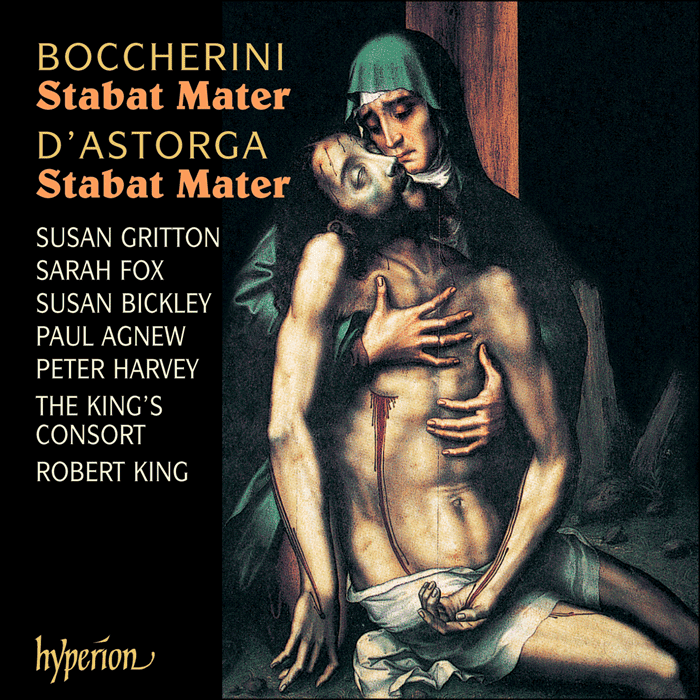Boccherini & Astorga: Stabat mater
The King's Consort, Robert King (conductor)
CDA67108
Boccherini wrote very little vocal music; however he left two settings of the Stabat mater. It was first set in 1781 for solo soprano and strings and then in 1800 for two sopranos and tenor, obviously influenced by the hugely-popular Pergolesi Stabat mater of 1736. There are many similarities in the notation and harmony—even the same key of F minor is used. The writing is of extraordinary individuality and seems to come straight from the heart. This unjustly neglected piece is surely one of the most remarkable sacred compostions of the era.
Emanuele d'Astorga was one of the most colourful figures in early eighteenth-century music and his life has often been the subject of legend rather than fact (brief details of which can be discovered in Robert King's illuminating booklet notes). During his life, Astorga was best known for his well-written and tuneful chamber cantatas (of which more than 150 survive) and his opera Dafni (only Act 1 now survives). But by far his most enduring work has proved to be this setting of the Stabat mater, his only surviving sacred composition. Throughout it we hear Astorga's gift for writing warm melodies, typical of the Neapolitan style of the time, and how he captures the melancholy of this most desolate of sacred texts.

